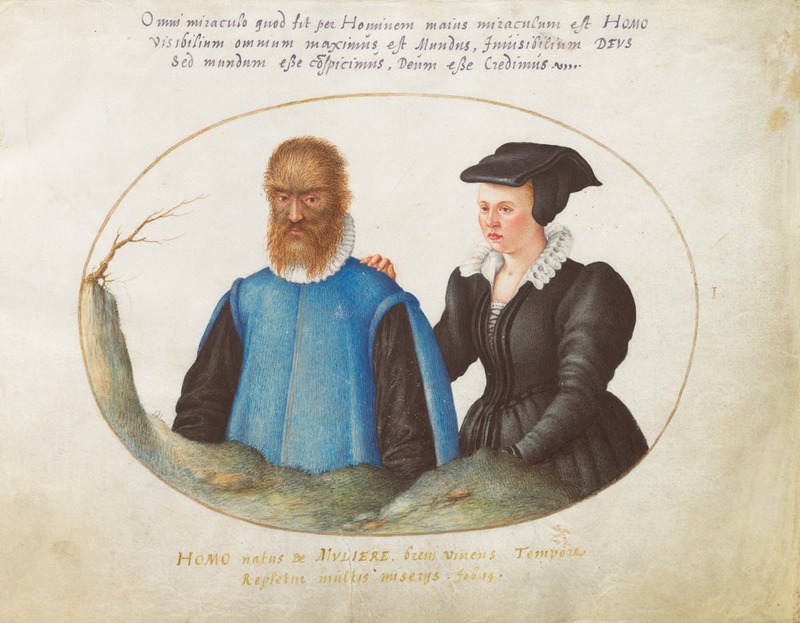Ignis, Plate I (Gonsales)

Hoefnagel, Joris "Animalia Rationalia et Insecta (Ignis): Plate I" from Four Elements, 1575. Watercolor and guache, 14.3 x 18.4cm. Washington DC, National Gallery of Art. 1987.20.5.2
Opening the first volume in Joris Hoefnagel’s Four Elements, the viewer meets Petrus Gonsales accompanied by his wife on the first folio. Afflicted with hirsutism, hair covers his entire body as he walks the line between a human and a savage. His appearance is bestial, though he received a courtly education courtesy of King Henry II. Having Gonsales on the very first page of Four Elements sets a bold standard for the rest of the volume, questioning both the nature of being a human versus an animal, and asking how closely humans relate to the natural world.
Petrus Gonsales stands with his wife, whom he married after being taken from his homeland of the Canary Islands into France by King Henry II (note 1).He endured much scrutiny due to his condition. Within their golden oval, Gonsales and his wife are alienated from the human community. They are physically connected as her hand lies atop his shoulder, albeit rather uncomfortably. She stares at her husband as Gonsales looks out to engage with the viewer, daring us to consider him a human rather than another specimen akin to the ones contained in the folios to follow. Gonsales’s hirsutism is an abrupt juxtaposition to their courtly attire, which lends to his history of being taught civilized manners during his stay in France. There is also a notable difference between the arid, bleak environment in which they are depicted, versus the human sphere. Like their environment, the couple is desolate and isolated.
Gonsales stands as a link between the human and the natural world: his condition sets him on the fringes of both, not wholly accepted by either. Like insects, there is an aesthetic of winder, as well as a lack of understanding. Through inspection and consideration, readers are led to ask “why”? Biologically a human without a human appearance, and placed within Four Elements, Hoefnagel questions the idea of humanity, as well as what exactly the border is between the human and the natural world (note 2).
Notes
note 1. For more information on Gonsales’s life, please reference Lee Hendrix, Joris Hoefnagel and the Four Elements: A Study in Sixteenth-Century Nature Painting (1984), pp. 99-104.
note 2. Further analysis and background can be found in Hugh Raffles, “The Ineffable” Insectopedia (2010), pp. 132-134.